 |
 |
 |
| |
COVID Pushes USA Farther Off Course to Meet HCV Elimination Goals
|
| |
| |
2022 CROI, February 12-16 and 22-24, 2022
"Mortality is up. Incidence is down slightly because although primary incidence is UP, reinfections are down because of fewer people being treated. This leads to a slight overall decrease in total incidence, but the main point is we are WAY off what we need to reach the elimination targets so need a big scale-up in prevention+treatment." Authors

Mark Mascolini
Even before COVID-19 scrambled healthcare access and HCV testing and treatment, the United States lagged national HCV elimination goals; with the pandemic, the US fell even farther off track in meeting these goals [1].
This bad news came from researchers at the University of California, San Diego (UCSD), who devised projection models to simulate the impact of COVID on HCV transmission and progression in the United States. They took as their targets World Health Organization (WHO) and US National Academies of Science and Engineering (NASEM) HCV goals-an 80% dive in HCV incidence from 2015 to 2030, and a 65% drop in HCV-related mortality from 2015 to 2030. The researchers also referenced the CDC's Division of Viral Hepatitis 2025 Strategic Plan's 2017-2028 HCV elimination targets of about a 90% plunge in new HCV infections (incidence) and a 65% swoon in HCV-related mortality.
Introduction of direct-acting antiretrovirals (DAAs) that cure HCV infection informed these original elimination and mortality goals. But authors of those targets did not envision a galloping pandemic that would kill nearly 6 million people (so far) and disrupt health care beyond any modeler's worst-case nightmare. Earlier, the UCSD team found that the number of HCV-infected people in the US who started DAAs slipped 30% by April 2020 in the mammoth Quest and LabCorp databases. And the DAA initiation rate did not rebound through the end of 2020.
With those sobering statistics in mind, the UCSD group set out to model the impact of COVID-19 on progress toward making HCV a disease known only in history books. They built a general population deterministic compartmental model simulating HCV transmission and disease progression from 1990 to 2030. The model considers three age groups (20-30, 31-51, 52+) two risk groups (people who inject drugs and former or noninjectors), and HCV disease stage, diagnosis status, and treatment status.
The UCSD team applied their model to three scenarios:
- Scenario 1: Status quo-No disruption to HCV treatment uptake
- Scenario 2: One-year COVID-19 disruption-30% reduction in HCV treatment uptake from 2020 to 2021 (the rate observed in national data)
- Scenario 3: Two-year COVID-19 disruption-30% reduction in treatment uptake from 2020 to 2022
The researchers estimated 67,267 new HCV infections in the US in 2015 (95% confidence interval [CI] 23,433 to 114,471). For the 2-year disruption scenario, the model predicts a disturbingly meager 5.5% relative reduction in annual HCV incidence from 2015 to 2030 (95% CI 5.1 to 5.8). That forecast compares miserably with the prepandemic WHO/NASEM goal of an 80% drop in new HCV cases to 2030.
The model projects a 20.6% dwindling of HCV-related mortality from 2015 to 2030 in the 2-year disruption scenario (95% CI 14.4 to 29.5)-way off the proposed target of 65%. By 2030 the model foresees 847 excess HCV-related deaths in the 1-year disruption scenario (95% CI 645 to 1061) and 1583 excess deaths in the 2-year disruption scenario (95% CI 1210 to 1981).
The UCSD investigators issued this unhappy conclusion: "The US was not on track to meet the NASEM/CDC elimination targets before the COVID-19 pandemic and has now fallen further behind."
Only "urgent scale-up" will put the US back on track to meet previously set goals. The researchers proposed that scale-up include these three steps:
- "Identification of infected individuals through screening and diagnosis targeting key populations
- "Linkage to care which includes curative treatment
- "Reduction in transmission through harm reduction scale-up (opiate agonist therapy and needle/syringe programs)"
Reference
1. Flores Ortega RE, Hoenigl M, Cheema JS, Reau N, Martin N. Modeling impact of COVID-19 pandemic on hepatitis C virus elimination in the US. 2022 CROI, February 12-16 and 22-24, 2022. Abstract 72.
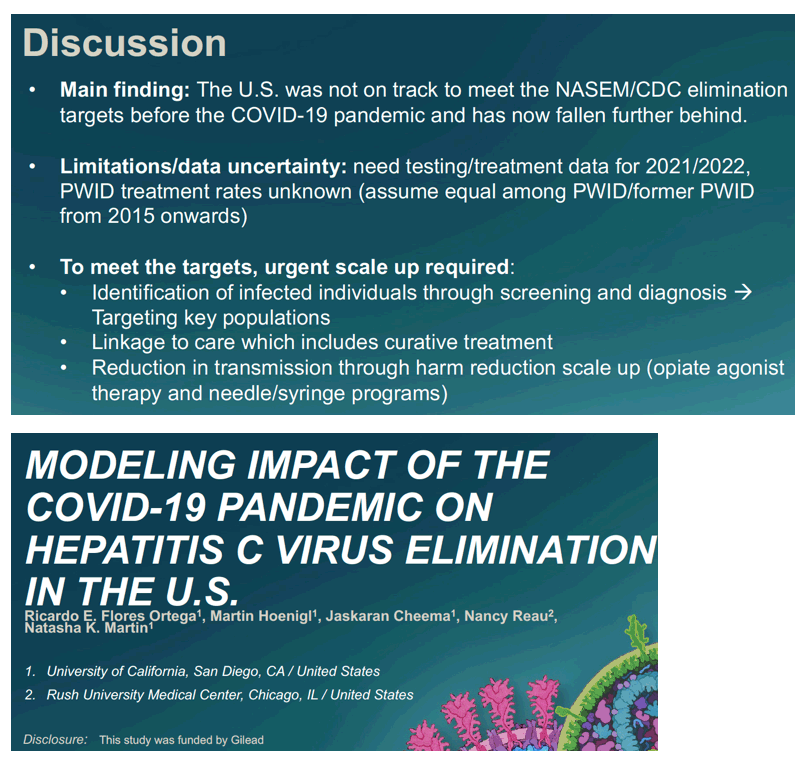
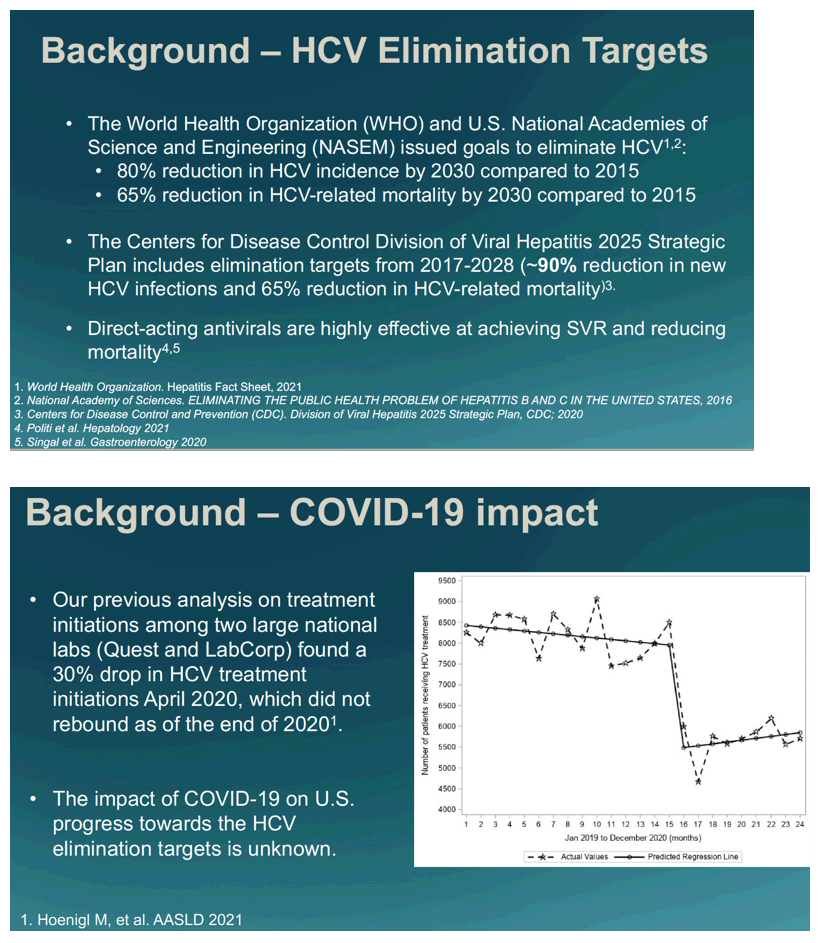
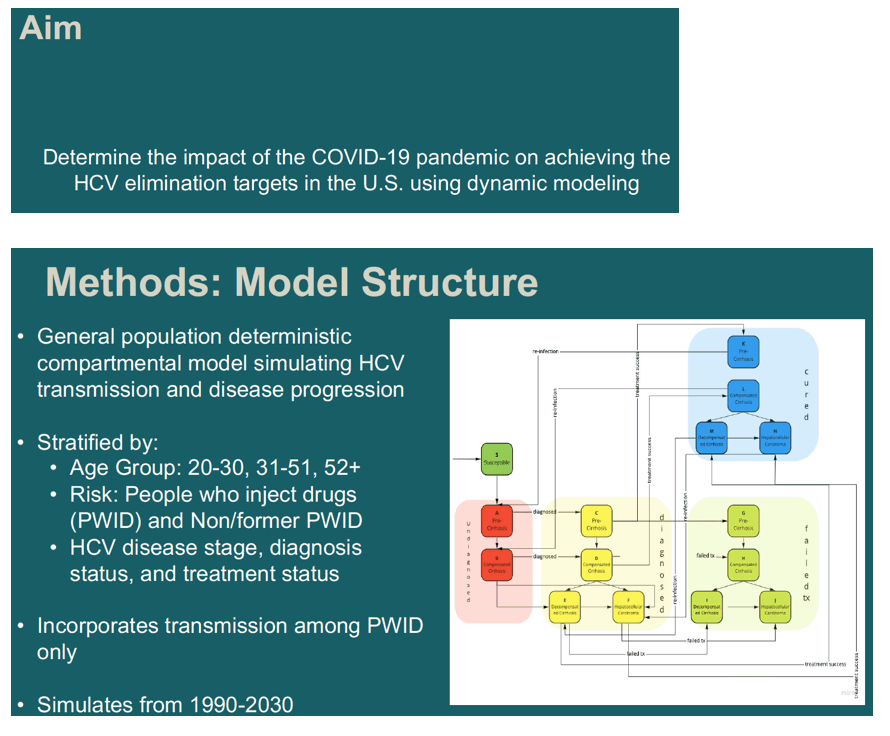
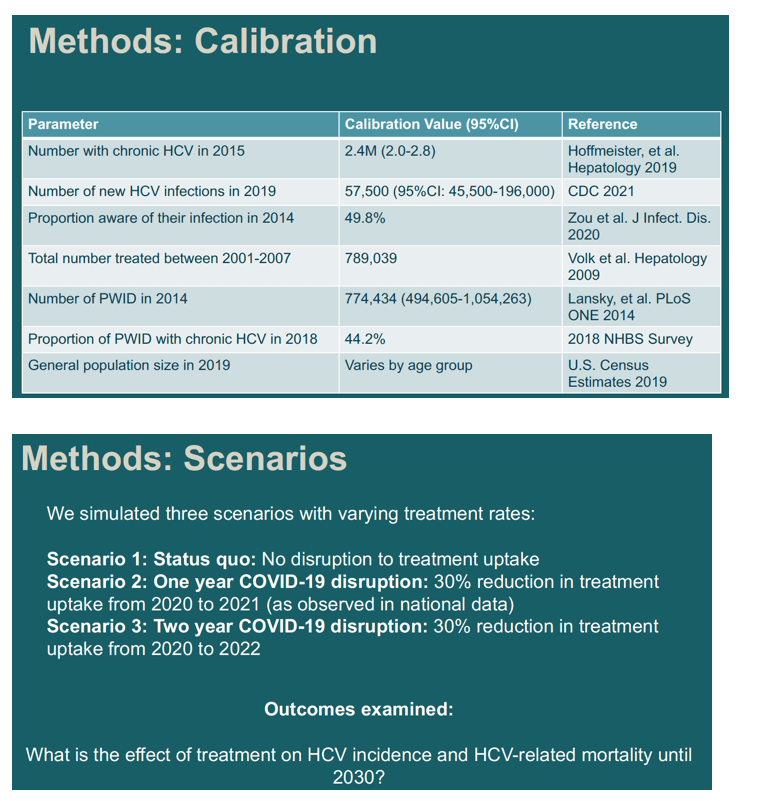
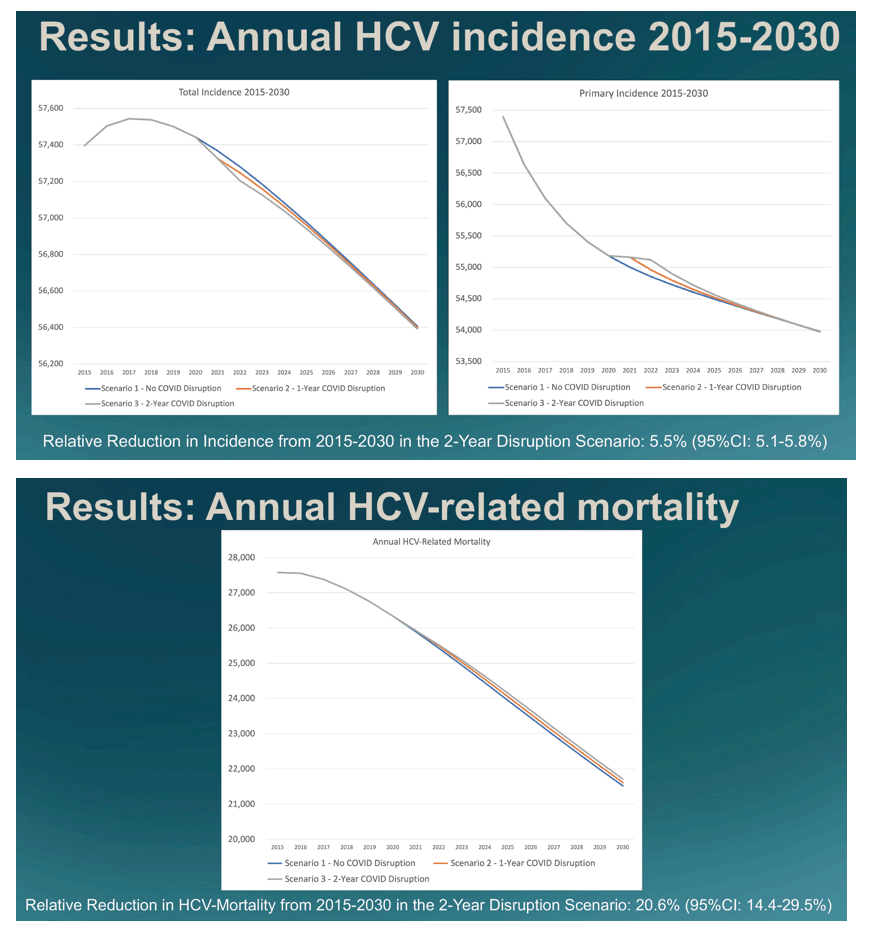
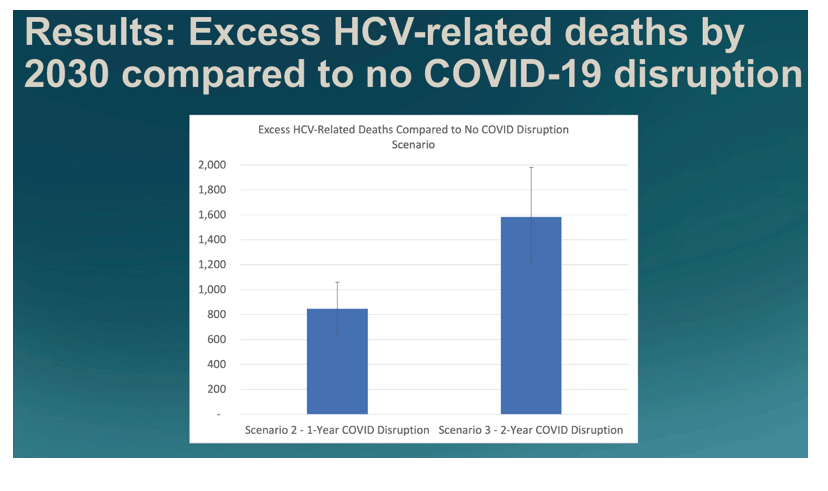
|
| |
|
 |
 |
|
|